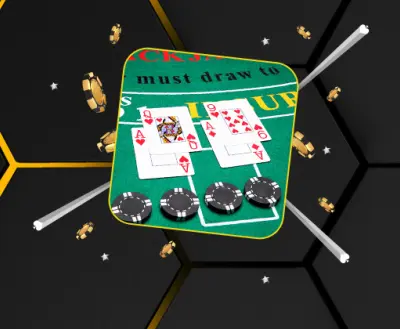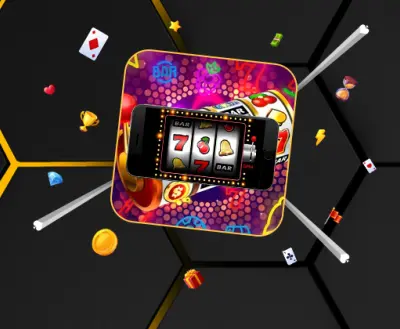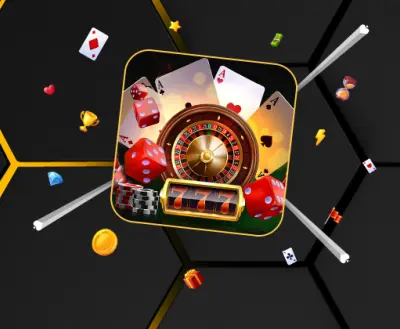What is Bluffing?
What is Bluffing?
Poker bluffing is when a player represents a hand stronger than they currently have. There are a few different types of bluff, which we will cover later. However, they all have the same aim. When a player bluffs, they are attempting to get others at the table with better hands to fold, meaning that they sweep the pot as a result.
Betting, raising, or checking are actions that can be used when bluffing. People will approach a bluff in different ways, and it's important to remember that each strategy can be adjusted, depending on the players at the table.
While there are a handful of bluffing card games, it's most prevalent in variations of poker, such as Texas Hold'em, Omaha, seven-card stud, and 5 card draw. In this post, we look at poker bluffing as a whole and offer some tips for increasing the chance of success!
Definition of Bluffing
So, what is a bluff? The definition of bluffing at card games is when a player deliberately acts in a specific way to deceive others at the table. As mentioned earlier, this can include betting, raising, or checking. By bluffing, players can still have a chance at being involved in the hand and winning the pot, even if they are dealt weak cards.
Types of Bluffing in Card Games
When playing poker, bluffs will fall under one of four categories:
1. Continuation Bluff
First up is the continuation bluff, where the player will act first and rely on other players not connecting with the flop, turn, or river.
2. Opportunist Bluff
Next up is an opportunist bluff, and as the name suggests, is often done on the fly. Should it become apparent that all other players have weak hands, this presents an opportune time to try a bluff.
3. Semi-Bluff
A semi-bluff is when the player currently has a weak hand but still has a chance to connect with the board in order to improve their standing. For example, if the player has a hand that consists of an 8 and 9, with the board showing a 10, a J, and a 4.
4. Stone-Cold Bluff
Last but not least is a stone-cold bluff. This is when there is little to no chance of the player winning the hand at showdown. A great example of this would be if the player had a low value or middle of the range high card, such as a 7 or 8.
Bluffing in Poker
Now, let's take a look at some methods and tips that can help players to land a successful bluff. The first tip is relatively obvious, but practising can go a long way. Players can try different tactics and see the success rate, while also learning to identify bluffs from others. Usually, a bluff should be played in the same way as a strong hand. Otherwise, it may be too obvious.
Staying unpredictable is also key when poker bluffing. This can be achieved by mixing up each hand and throwing some bluffs in on a semi-regular basis. Players that never bluff will likely find it hard to get value at the table, while players that bluff frequently may experience a lower success rate.
Another tip involves paying attention to the current pot size. Some poker players will bluff more often on small pots, as it can lead to scooping up the ante bets. If the table is loaded with amateurs, they may not put up much of a fight if there are few chips in the centre. Naturally, this can make bluffing much easier.
Spotting a Bluff
Spotting a bluff is another skill that can greatly help poker players. If identified correctly, value betting can lead to a large stack of chips being taken from the failed bluffer. One sign to look out for is an unusual betting pattern that either doesn't make sense or is significantly different from how the player has acted in previous rounds.
When it comes to bluffing, physical tells can give away a bluff rather easily, if they're not controlled. Some examples may include:
- Talking too much in an attempt to seem confident and surprise any feelings of anxiety.
- Shaky hands or heavy breathing.
- Looking other players directly in the eyes.
Players that are bluffing may also act quickly. This is often because they have already made a decision before the action is passed to them. When bluffing, the actions of other players arguably have less importance, meaning that little thought is required after the previous player has made their decision.
Betting aggressively and being on tilt are other factors that can indicate that someone is bluffing. If a player has lost a lot of hands in a row, they may be more inclined to bluff, in an attempt to recoup some of their chips.
Advantages & Disadvantages of Bluffing
There are two standout advantages of bluffing, besides just winning the pot. First is the ability to build an unpredictable reputation at the table, which can be helpful with both future bluffs and stronger hands.
Landing a successful bluff can also tilt other players, especially if they folded a strong hand or lost a large pot as a result. This can influence their upcoming decisions, perhaps making them play more aggressively or think less before acting.
As for the disadvantages of bluffing, there is always the potential to lose the hand. This can cause the player to lose a portion of, or all of their chips as a result. If the bluffer makes an incorrect read on the strength of a player's hand, they can quickly find themself in a tricky situation.
Overall, bluffing at the poker table can be incredibly useful. It opens up a variety of opportunities, such as appearing unpredictable or winning a pot with a weak hand. Practising at free tables is a great way of getting better at bluffing, before potentially moving on to small stake options.
Online Poker at bwin
Over the years, the popularity of playing poker online has significantly increased. The number of players has risen significantly not only in the UK but also worldwide. Previously, poker was limited to being played at land-based casinos or cafes, but now players can enjoy it from the comfort of their own couch.
If you are new to online poker, bwin online casino is the place for you! Here, you can find Texas Hold'em, Omaha and other online poker games.
Playing poker online offers numerous benefits, including access to bigger tournaments, the ability to play at any stake level, and the convenience of being able to squeeze in a quick 30 minute session when in a hurry. Are you ready to get started? Simply download the app by clicking here.







